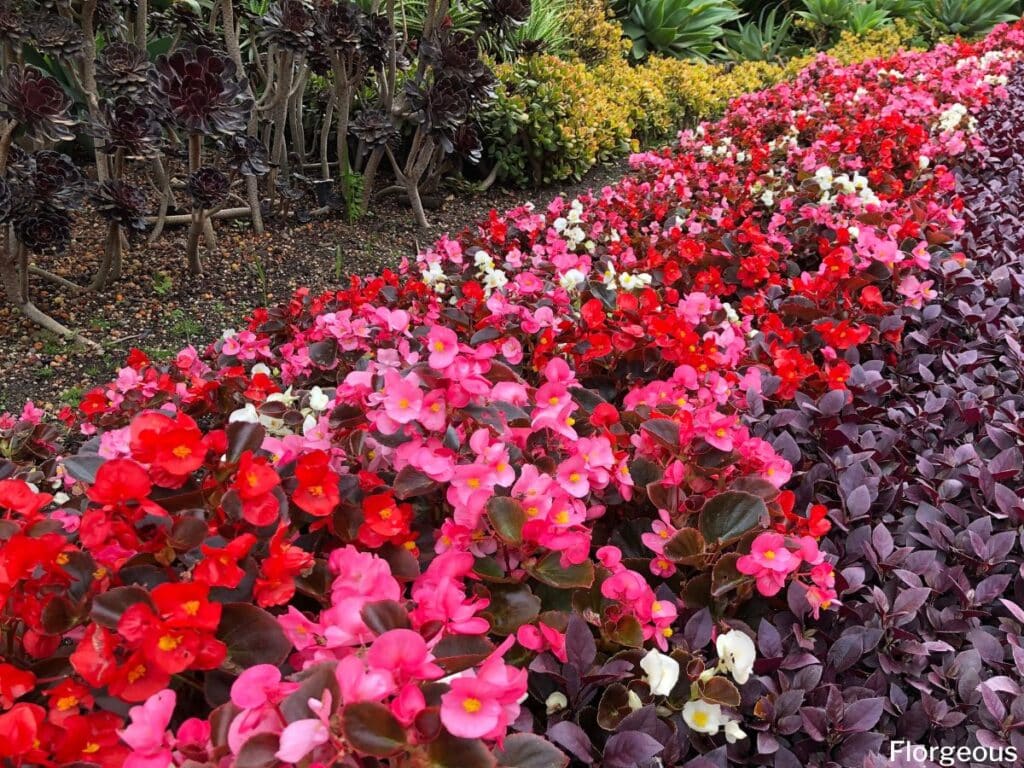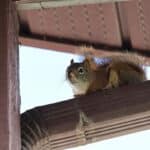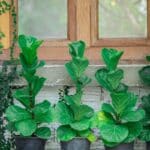Begonias are a popular flowering plant that are grown in almost every growing zone—primarily as annuals. Gardeners who grow or plant these flowers often spend days on the project—not including routine maintenance—so any harm that comes to them can be a huge disappointment.
While there are a multitude of creatures and critters who would love to snack on your plants, some of the most harmful are deer.
Do Deer Eat Begonias?
Unfortunately, begonias are not deer resistant, as is the case with other plants as well. While there are some breeds of begonia that claim to have deer-deterring properties, none of them are completely safe.
Deer are motivated animals and will generally eat any plant that doesn’t cause them harm. If a hungry deer walks through your garden and comes across your unprotected begonias, they’re as good as gone.

Do Deer Eat Geraniums or Begonias?
Neither geraniums nor begonias (including all types of begonias, like tuberous begonias, dragon wing begonias, wax begonias, hardy begonias, and rex begonias) are generally a deer’s first meal choice; however, they are both in danger if they are the only—or easiest—option.
When choosing between a geranium or a begonia, deer are more likely to go for the begonias.
Deer eat geraniums as their last choice if other foods aren’t available because geranium plants are strong-smelling and even possess a toxic compound that can make the deer sick if they consume too much. While begonias also have a strong fragrance, they post no toxic hazard to deer and are generally easier for them to eat.
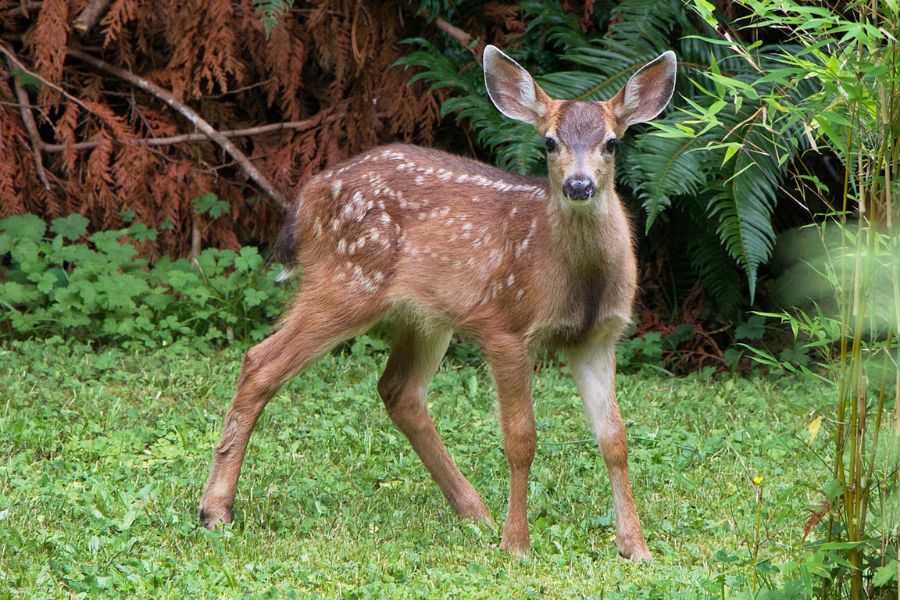
How Do You Keep Deer From Eating Begonias?
If you live in an area where deer may wander by, you will want to consider implementing some preventative measures to help protect your begonias. Thankfully, there are several options when it comes to protecting your flowers from tricky creatures such as deer.
Grow in Hanging Baskets
Sometimes the simplest solution is the best; in this case, that solution would be growing your begonias in hanging baskets. Once you have your begonias planted in the hanging baskets, you can then hang them on hooks around your porch, from shepherd’s hooks in your yard, from tree branches, or wherever feels most appropriate for your landscaping.
Similarly, you can use window boxes attached to windows that are taller than deer—most likely a second floor or higher.
Planting your begonias in a window box and keeping them in an out-of-reach window is as effective as hanging baskets, or even more so, because deer are less likely to jump all the way up to your window for a snack—they are much more likely to find something within an easy reach or stretch.
Plant Other Deer Resistant Plants
Although begonias lack deer resistance, there are some plants that are. Planting deer-resistant plants near or around your begonias can act as an effective protection plan for your beloved flowers.
Some deer resistant annuals work by emitting a strong fragrance that deer strongly dislike, others are thorny or textured in a way deer dislike, and still others are toxic to the animals—the deer know to stay away.
Lavender
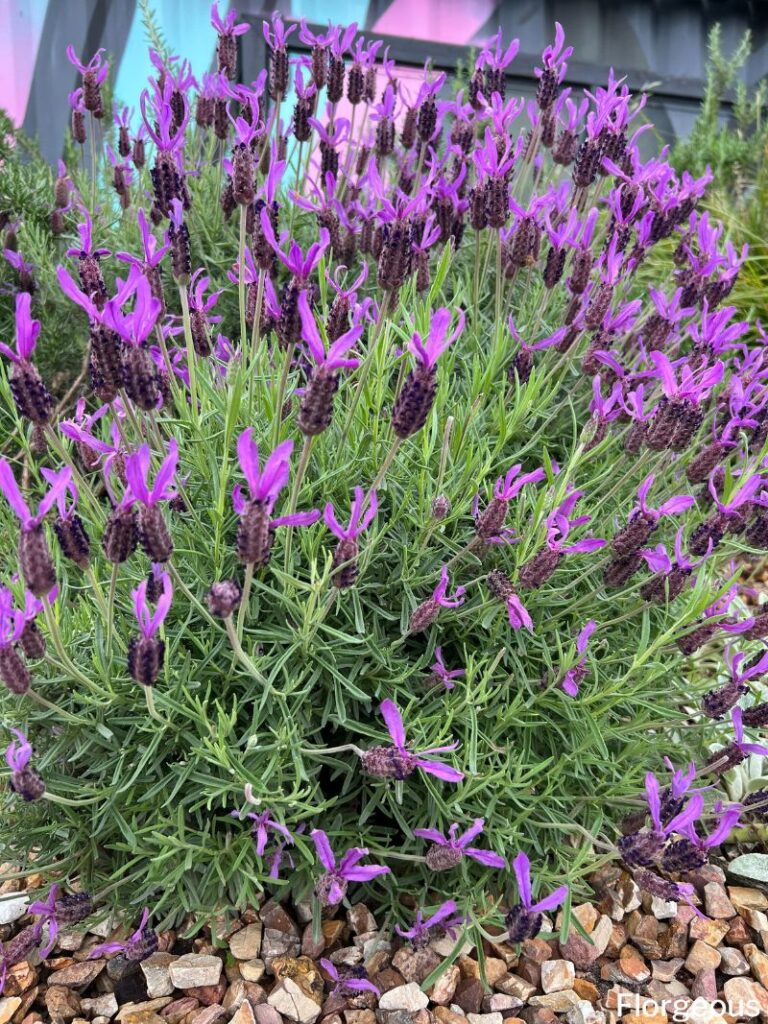
Lavender is a good example of a plant that is considered deer resistant due to its strong fragrance.
Planting lavender plants in the nearby vicinity of your begonias may be enough to keep the deer from coming to admire your landscaping, just be sure they are close enough to be effective. While deer tend to stay away from the pungent flowers, most of us love the smell of a blooming lavender plant, making it a welcomed addition for most gardeners.
There are many varieties of lavender, many of which grow in different climates and bloom at different times of the year. Do your research before purchasing lavender to make sure it will be in bloom and, therefore, effective when you need it to protect your begonias.
One thing to note regarding strong-smelling deer-resistant plants is that deer can become accustomed to a certain scent over time. If they get used to the fragrance of your deer-resistant plant, it may render the plant ineffective. Therefore, you may need to switch the type of deterrent plant you use at some point to continue to keep the deer away.
Lamb’s Ears
Lamb’s ear is a fun example of a deer-resistant plant that is effective because of its texture.
While some deer-resistant plants are thorny and can harm the deer, it’s the texture of the lamb’s ear leaves that is simply undesirable to a deer. The leaves of a lamb’s ear plant are covered in tiny fibers that both look and feel fuzzy—hence the name. While humans may enjoy the soft sensation of running their fingers across the leaves, deer don’t want anything to do with them.
Since lamb’s ears are only effective once the deer have ventured up close to see them, it is important to plant them as a perimeter.
Foxgloves
Foxglove is an example of a deer-resistant plant whose flowers are effective, not because of their fragrance, but due to their toxicity. In fact, all parts of the foxglove plant contain toxic chemicals that are poisonous to both animals and people.
Many deer will recognize the toxic chemicals and steer clear of the plants altogether, making foxglove a very effective deterrent when planted near your begonias.
Unfortunately, some deer may not recognize the plant and will snack on it anyway, likely making them sick, but still increasing the chances of them not coming back in the future.
Since foxgloves are poisonous to all animals and humans, they should only be grown in areas where they are unlikely to be messed with by children, pets, and livestock. While they are beautiful, they do pose a danger to unsuspecting individuals.
Black-eyed Susans
Black-eyed Susans (Rudbeckia species) are beloved deer-resistant perennials in gardens across the United States. Their iconic yellow flowers with dark centers attract pollinators, but deer tend to avoid them due to their typically rough leaves and stems.
This annual black eyed susan is considered unpalatable to deer, making them a reliable choice for gardeners seeking protection against deer damage. The stems and leaves of Rudbeckia hirta are covered in small hairs, creating a texture that deer find less desirable.
These sun loving annuals thrive in well-drained soil and add a vibrant splash of color to any garden.
Sulfur Cosmos
Sulfur Cosmos (Cosmos sulphureus) are half-hardy annuals that burst forth with vibrant, fiery blooms. While they can’t withstand low temperatures, they may reappear in spring depending on winter conditions.
These deer-resistant flowers are a smart choice for gardeners seeking to limit deer damage.
The Cosmic Orange variety boasts vivid orange blooms, while the Purity white cosmos, Sensation mix cosmos, and Pinkie cosmos are also deer-proof options. These sun-loving plants thrive in full sun, require well drained soil, and add a cheerful touch to any garden.
Persian shield
Persian shield (Strobilanthes dyerianus) is a striking ornamental plant prized for its vibrant purple foliage with iridescent shimmer. Native to Myanmar, it thrives in warm, humid conditions and can reach heights of 3 to 4 feet.
Persian shield is valued not only for its visual appeal but also for its deer-resistant properties, making it a popular choice for gardens in areas prone to deer browsing.
Its bold colors and resistance to deer make it a versatile addition to landscapes, providing both aesthetic beauty and practicality for gardeners seeking low-maintenance and deer-resistant plants.
Use Strong Scents
If you don’t want to plant fragrant flowers around your begonias as a deterrent method, you can also choose to use artificial fragrances as a deer deterrent. One of the most commonly used items for strong scents is bar soap. Many gardeners place bars of fragrant bar soap around their gardens and flower beds to deter deer from entering or coming close enough to see the rarely damaged tasty plants within.
Another effective fragrance for keeping deer away is putrescent egg solids—this is exactly what it sounds like. The scent is a pungent, sulfur smell that is basically rotting egg. While putrescent egg solids can be purchased as animal repellent, you can also make this concoction at home.
The obvious downside to this deer repellent method is that your garden will smell like rotting eggs; however, if you aren’t in your garden often, the smell may not bother you—just don’t use this scent if your home is downwind from your deer resistant garden.
There are other specific deer-resistant scents that are sold as deer repellents. While many of these deer repellents have a strong fragrance that may also repel humans, some are designed to only affect deer and other similar mammals.
One negative aspect to using artificial scents is that you may have to reapply often. If you forget, the deer may wander in and mark your garden as an all-you-can-eat buffet. A positive aspect to using artificial fragrances is that you can easily change the fragrance if the deer become nose blind to one of them.
Another positive to using artificial fragrances is that they can be used at optimal times. Some fragrant flowers may not bloom exactly when you need them to in order to properly protect your begonias, while artificial fragrances can be used exactly when needed.
Try Fencing
While adding fencing around your entire garden or landscaping may be expensive and tedious, it is no doubt the most effective method to limit deer damage to your begonias and other plants.
The tricky part about finding an effective deer fence is that deer are both smart and excellent jumpers.
In terms of height, the only guaranteed deer-resistant fencing will be at least eight feet tall, as deer have been known to jump at height of around eight feet. A fence does not have to be this tall to be effective, but if you need a guarantee, that’s the goal for which you will need to shoot.
Metal Wire Fencing
Metal wire fencing is one of the most commonly used garden fences when it comes to preventing deer.
Wire fencing cannot easily be broken, moved, or jumped—it is also relatively affordable if you install it yourself.
While effective, this type of fence is generally a silver color, which is not always aesthetically desirable, and may stand out against your landscaping, taking away from the beauty of your yard or garden.
Nevertheless, the affordability and common availability of metal wire fencing make it a popular choice—but that doesn’t necessarily make it the best option for your property.
Privacy Fence
Another effective fencing option for keeping deer out is a wooden privacy fence. Privacy fences are more common in the suburbs; however, you are more likely to have deer issues if you live in the country or on the edge of town.
While many country yards are too big to realistically and affordably install a privacy fence, you can opt to fence a portion of your yard where you keep your garden or landscaping. Some even opt to fence three sides of their garden and plant deer-repellant plants along the front, leaving only one entrance to guard.
While privacy fences are generally a more expensive option, their stability and height make them highly effective and should be considered if you have a serious deer issue.
Deer Mesh
Deer mesh is another fencing option that has been known to greatly reduce the chances of deer-related damage to your flowers. This fence type is generally made of thin plastic mesh attached to wire posts surrounding your garden.
Deer mesh is often very tall and has a high breaking load—meaning it cannot easily be torn through. While effective, this type of fencing can be unappealing to look at up close. On the other hand, it is not easily seen from a distance, meaning you are not blocking the view of your garden from your window.
Deer mesh is most likely the cheapest fencing that is effective against deer; however, it may need to be rehung or replaced more often than other fencing types.
Feed The Deer
While deer can be pests and have the capacity to demolish an entire garden, not all gardeners hate deer. If you live somewhere that is calm and quiet enough for deer to make a frequent appearance, it may be nice to see them on your property occasionally.
There can be a fine line between wanting to see the deer and wanting to protect your garden and flowers, and a potential compromise could be to feed the deer before they help themselves.
The trick to feeding the deer as a way to keep them from eating your plants is to feed them as far away from your garden or landscaping as possible. Feeding them too close can cause them to explore further and find the forbidden goodies that lie in your flower beds or garden. You will also want to feed them regularly to ensure they don’t go searching for something better.
While this method is certainly not the most effective, it can at least reduce deer related damages to your garden—you may also make some friends.
FAQs
How do you keep deer from eating begonias?
To deter deer from eating begonias, you can try various methods such as using deer repellents containing strong scents or tastes, installing physical barriers like fences or netting around your garden, planting deer-resistant plants around the begonias, or using motion-activated deterrents like sprinklers or lights.
Are begonias toxic to deer?
Yes, Begonias are generally considered toxic to deer if ingested in large quantities. Deer tend to avoid consuming plants that are toxic to them, but in cases of scarcity or curiosity, they may nibble on begonias.
Final Thoughts
The truth is, deer eat begonia flowers, including rex begonias, wax begonias, hardy begonias, rieger begonia, and tuberous begonias. Deer eat begonias just as they might nibble on other types of plants, which can be challenging if you are attempting to grow begonias outdoors.
Depending on where you live, it can be nearly impossible to avoid deer roaming through your property. The primary objective is to deer proof your gardens and landscaping, whether that be through a strong fragrance, undesirable co-plants, impenetrable fencing, utilizing hanging baskets, or simply presenting the deer with something better.
Outsmarting deer can be a tricky challenge, and it may take some trial and error to find a method that is most effective for your home. It may even take a combination of the previously listed methods to save your flowers. Whatever method you choose, be sure you are not harming the deer and that you are using ethical methods—after all, they just want a snack.
Finally, learn what to plant with begonias to create a complete garden on our blog.

